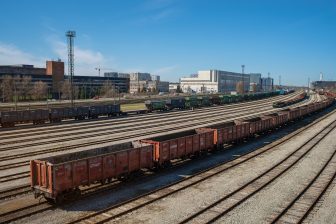
Railway modernisation part of sweet deal for Port of Gdansk
A significant section of the Port of Gdansk’s rail freight infrastructure will be upgraded as part of a major project to build a new shipping terminal for handling sugar transports. The port authority has signed a deal with Krajowa Spolka Cukrowa S.A (KSC SA) which will lease property for building the new facility enabling the entry and loading of ships with a large carrying capacity.
As part of the investment, Krajowa Spolka Cukrowa will build a transshipment and shipping terminal, including a silo with a capacity of 50,000 tonnes, a sugar packing floor, and a logistics warehouse with a capacity of around 10,000 tonnes. The investment will also involve the construction of logistics infrastructure along with the necessary storage base.
Expanded and modernised
The new sugar terminal will enable the unloading of sugar delivered in rail containers and silo trucks. Its adjacent, modern transshipment and shipping infrastructure will make it possible to sell sugar in polypropylene bags which can be stacked both in containers and the cargo holds of conventional ships. The port authority says that the elements of its railway infrastructure needed to enable sugar transports via the new terminal will also be expanded and modernised.
Lukasz Greinke, President of the Board of the Port of Gdansk Authority, said: “One of the greatest strategic advantages of the Port of Gdansk is its versatility. As opposed to our numerous highly specialised competitors from the Baltic Sea region, we provide operators with the opportunity to handle a broad range of cargo types. In 2017, the Port of Gdansk already handled nearly three million tonnes of bulk cargo – excluding fuels, coal and cereals. Thanks to the new sugar terminal, we will quickly improve these statistics.”
Used efficiently
Henryk Wnorowski, President of the Board of KSC S.A, added: “The construction of the first sugar terminal in Poland gives us the opportunity for export sales during a campaign at the level of about 75,000 tonnes of sugar, thanks to which we will be able to limit the need to rent space in external warehouses, and the silo at the port will be used efficiently. All these aspects translate into handling, transport, warehousing, material, and workforce cost reductions, as well as a reduction in quantitative losses of sugar during transport between sugar factory, external warehouse and port. The investment will make it possible for KSC S.A. to export shipments outside the EU via the port at a level of about 300,000 tonnes of sugar a year.”





